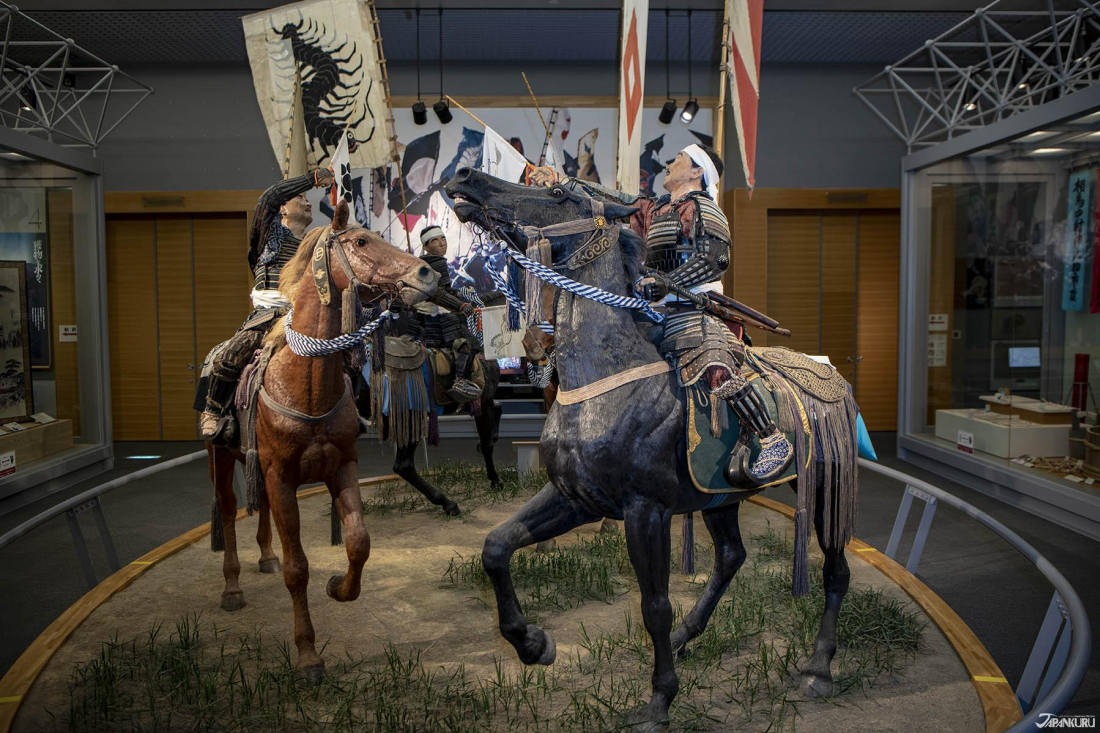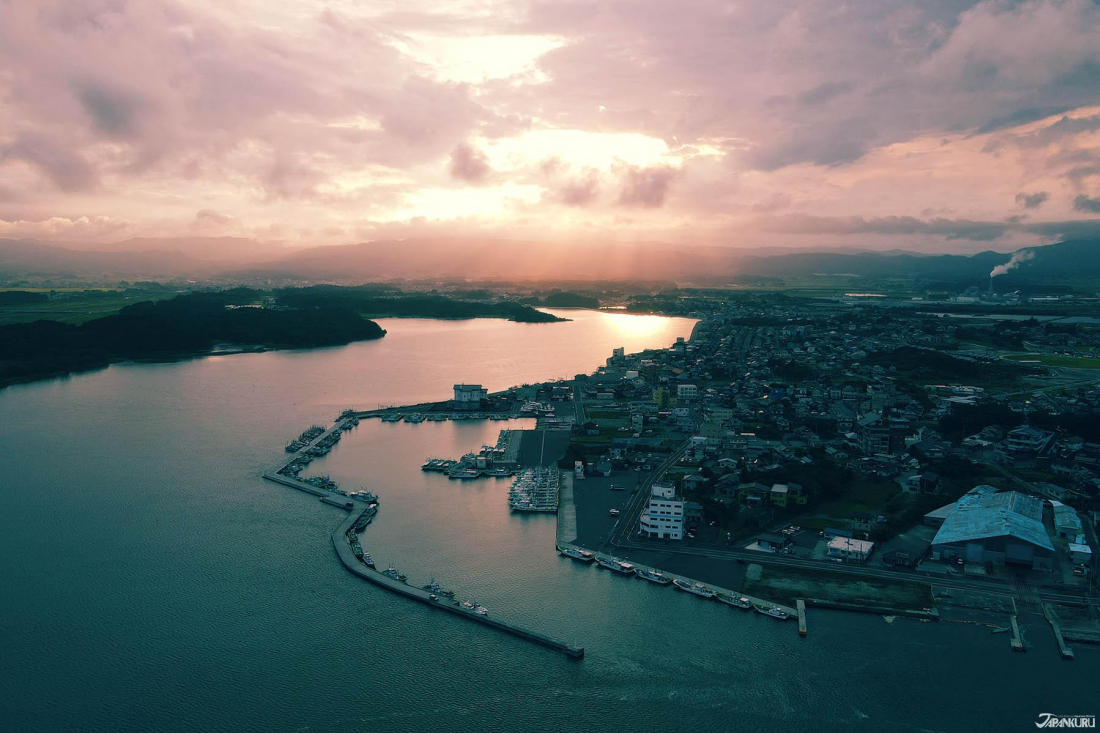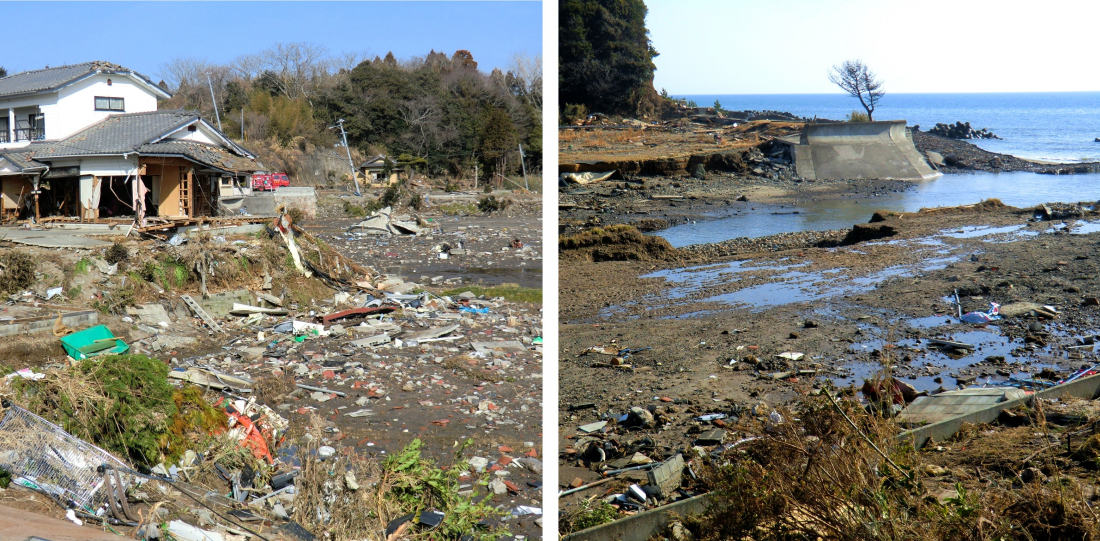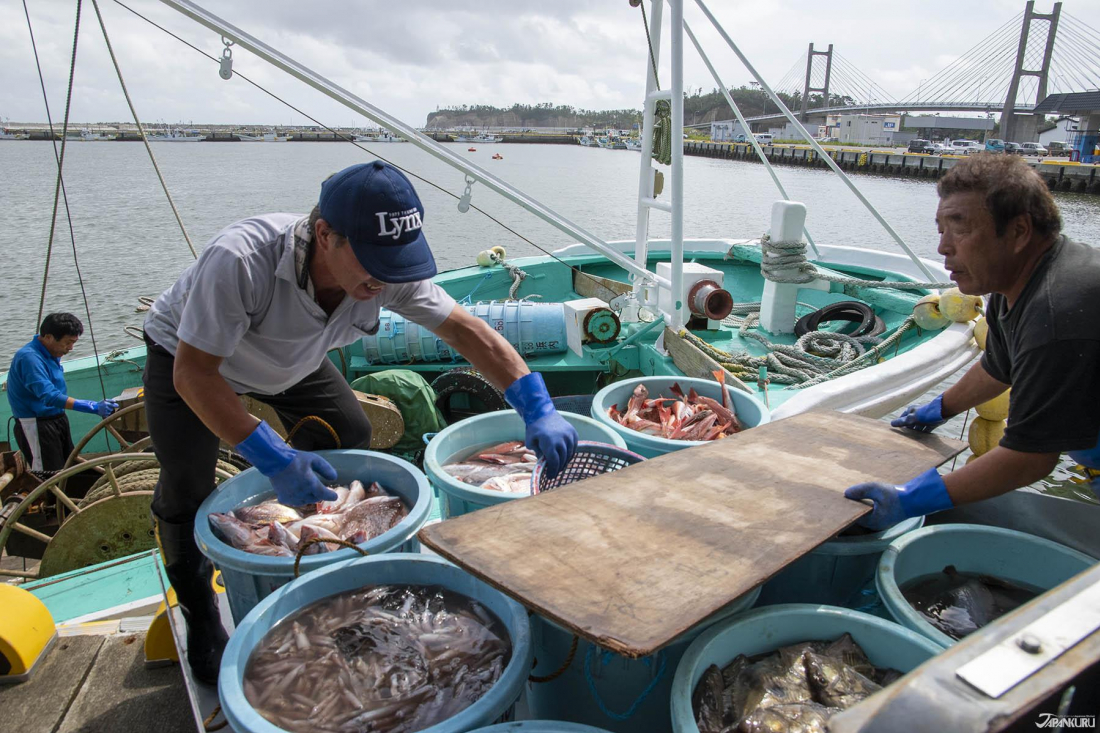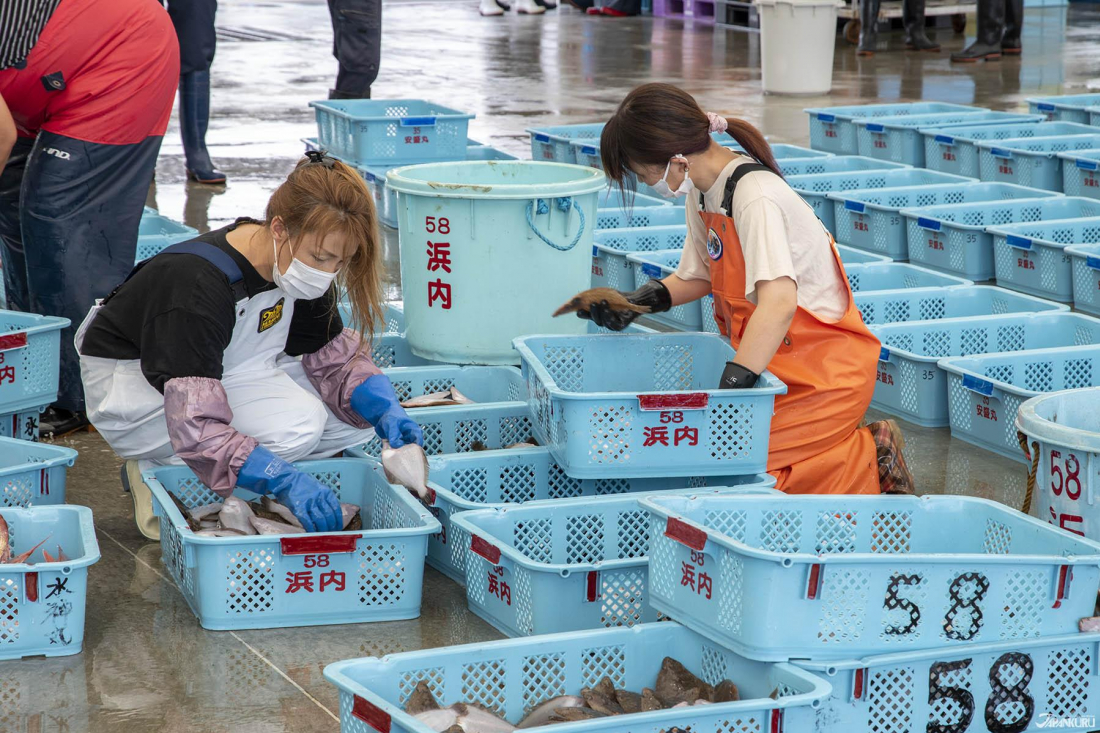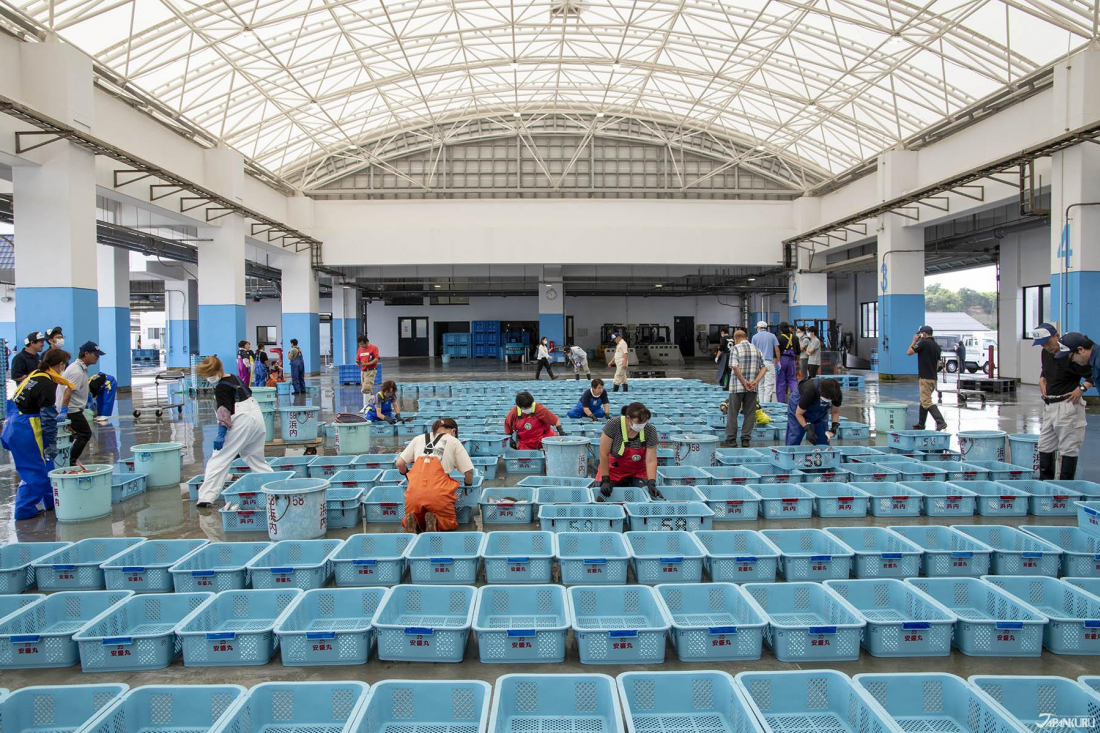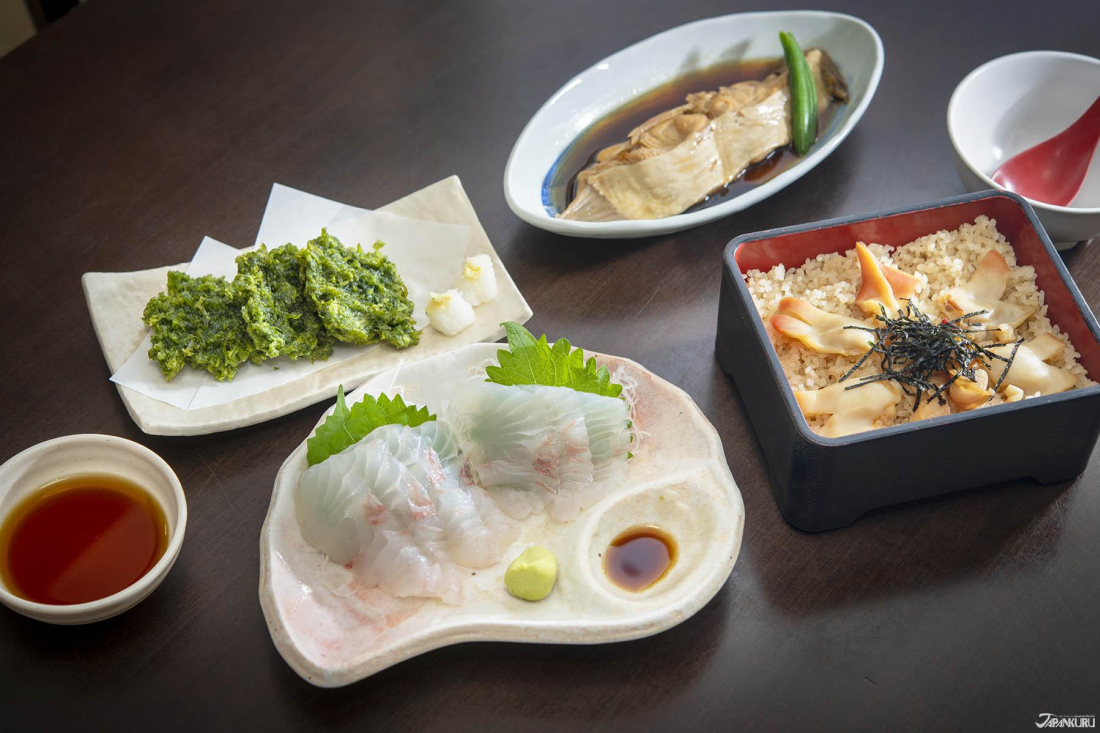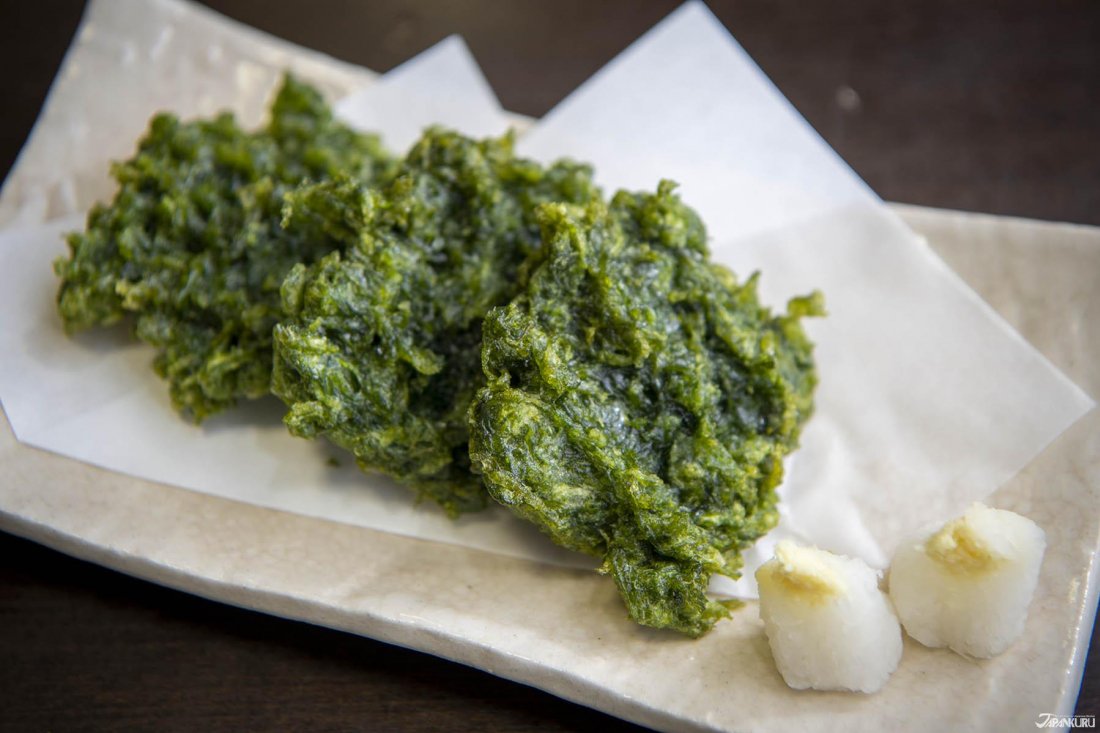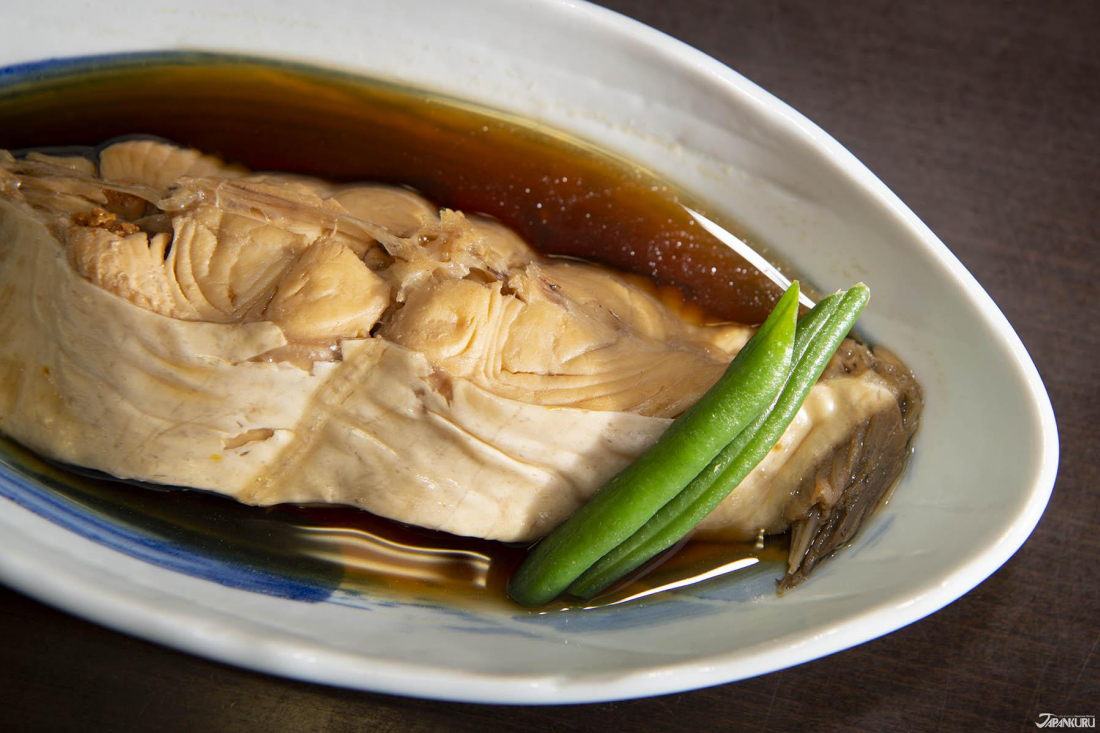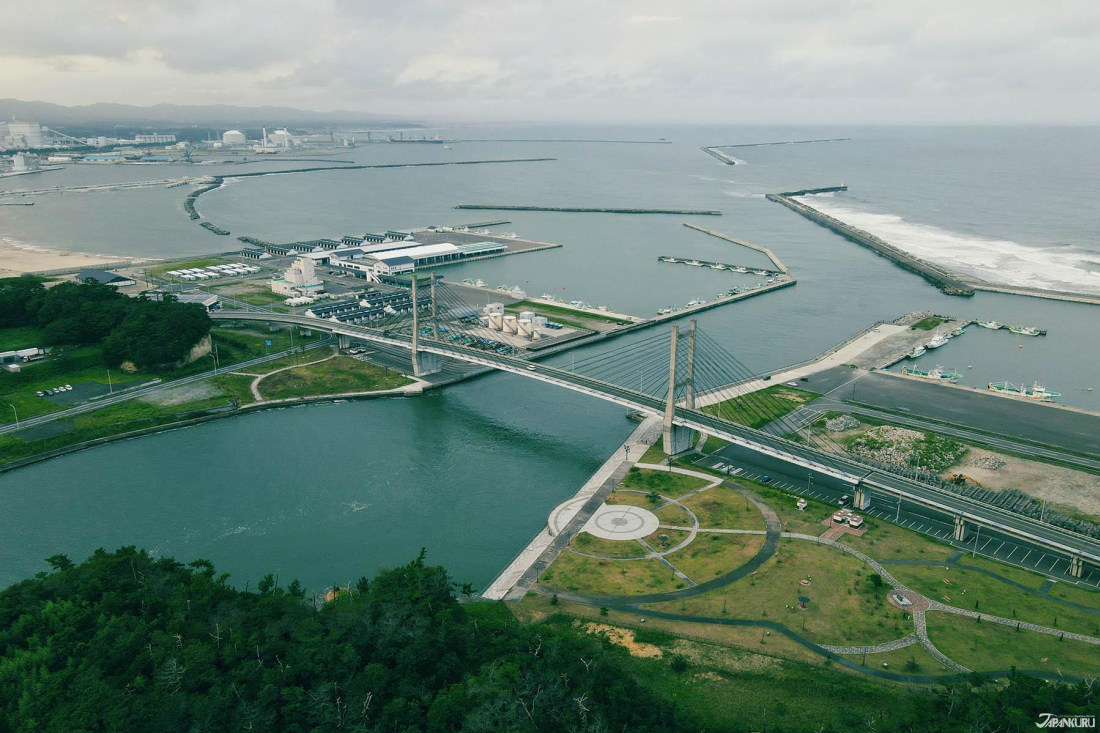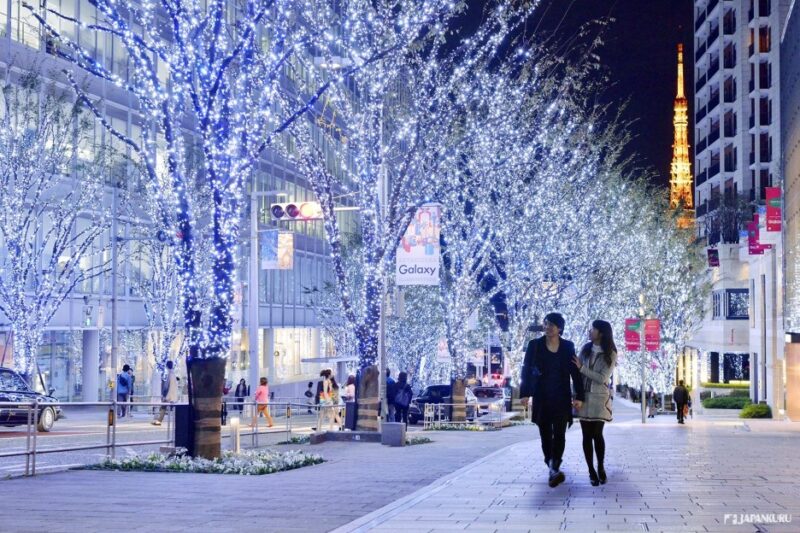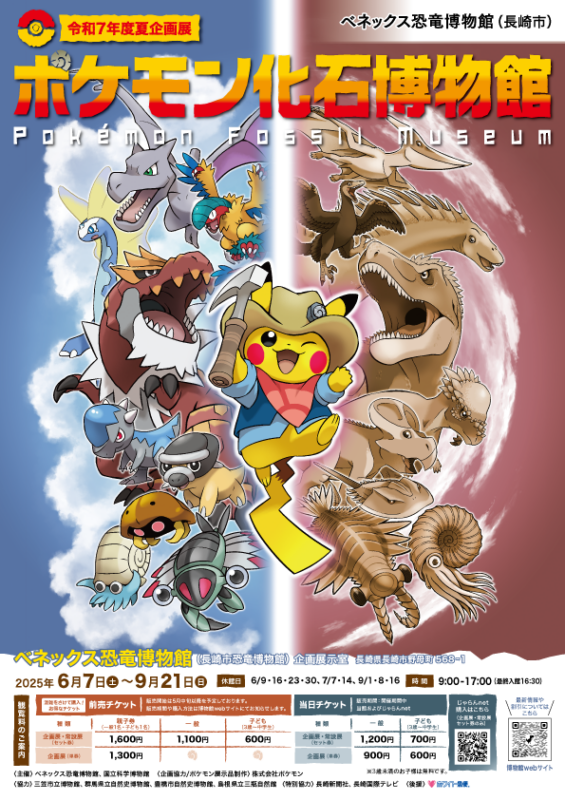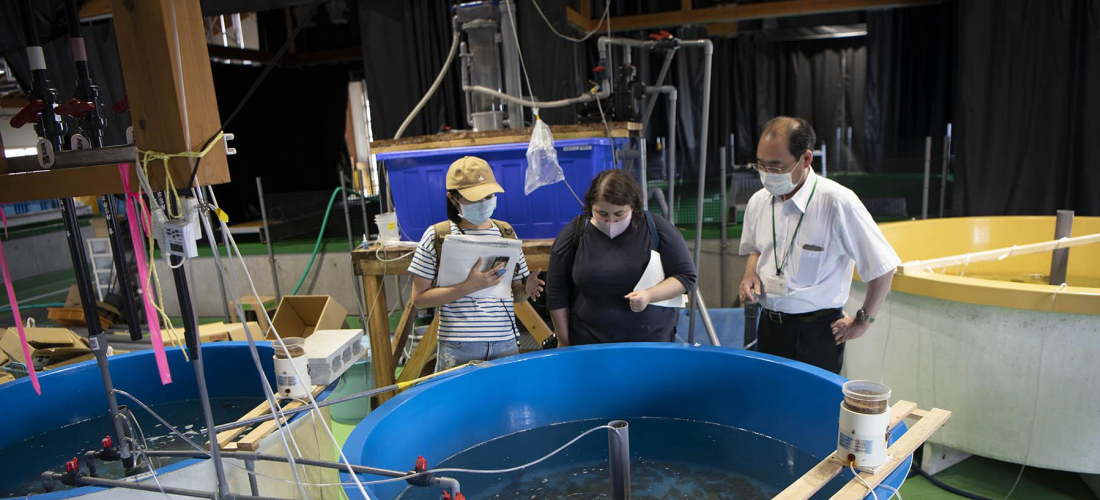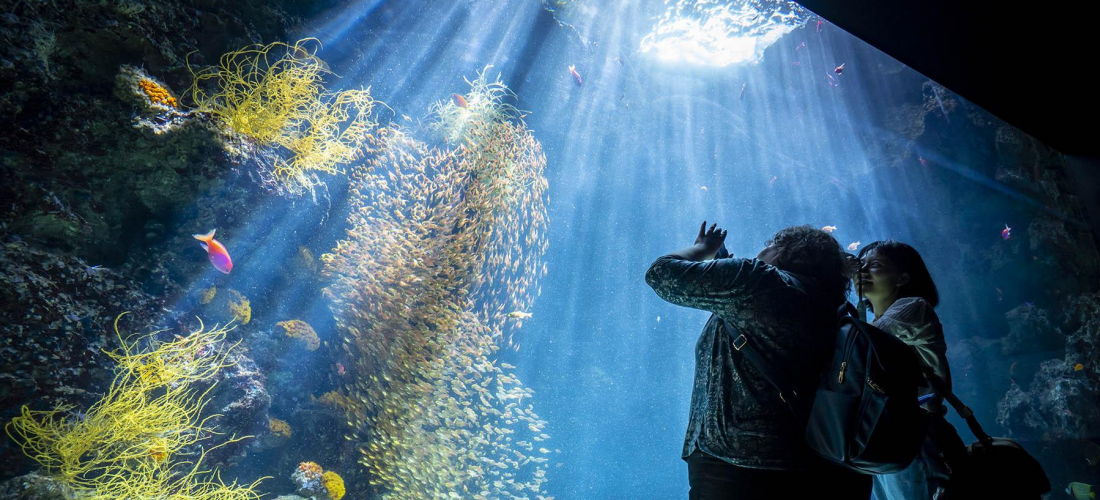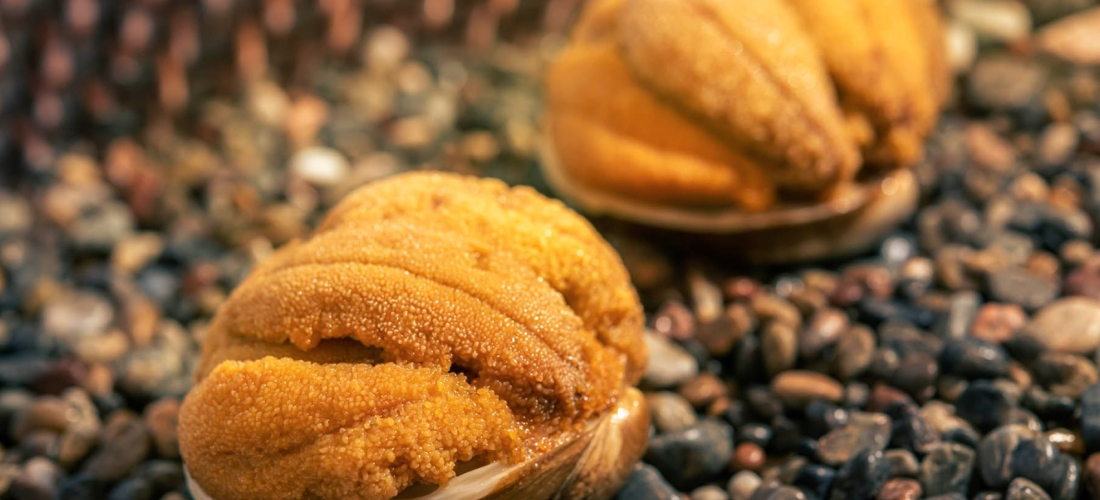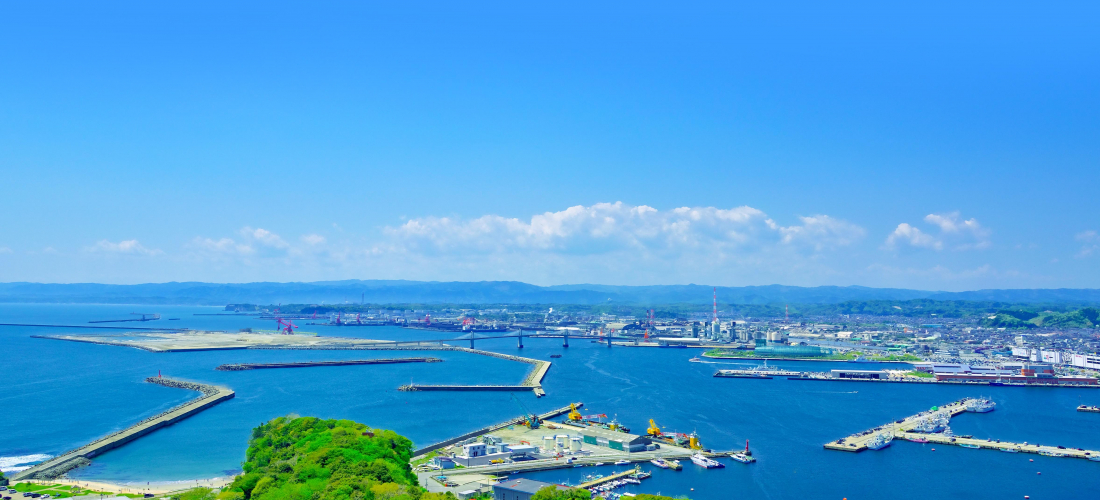
CONTENTS
Soma is a small town of abundant seafood, and iconic (historic) horses, still thriving on the shore of Fukushima’s only lagoon, Matsukawaura.
Soma – A City of Fish and Horses
To anyone familiar with the Soma name, hearing it might bring to mind images of a huge, majestic festival of horses and historic armor, rather than a calm seascape. And while the Soma area has much more to it than one festival, it's certainly a beloved part of the local culture.
This love of horses reaches back to the Soma clan of centuries past, who once ruled over the region, and introduced the Soma Nomaoi festival (相馬野馬追) that continues to this day. Warriors on horseback parade through Soma and corral wild horses, which they present as sacred gifts to Shinto shrines―all a treasured part of local history well-documented in the Minamisoma City Museum, and still in practice. Even now, horses are ubiquitous in Soma, and a good half of the 250 horses that run in the annual festival still live in the area year-round. Despite the city's small size, the Minamisoma Equestrian Park even has one of the largest indoor riding halls in Japan.
However, at any time of the year aside from the few days of the mid-summer Soma Nomaoi festival, visitors to Soma will probably spend more of their time in the area appreciating the city's proximity to the ocean, and all it provides. Off the coast of Soma is Matsukawaura Prefectural Natural Park, which includes the sizeable Matsukawaura Lagoon, a calm body of seawater dotted with uniquely-shaped little islands. It's one of Japan's top 100 scenic views, with strips of land jutting out into the dark blue water. Along the shores, locals and travelers alike look out onto the calm lagoon as they play park golf on seaside courses, or casually cast fishing rods into the waters―just a small hint at the marine life the water is hiding.
Soma’s Fisheries – Markets, Sorting, and Safety Testing
Looking to find out more about Soma's fishing industry, the Japankuru team headed to the wholesale fishmarket and testing facility in Haragama, Soma, to see the fishery business in action. Thanks to the meeting of the Oyashio and Kuroshio ocean currents off of Fukushima's coast, the area is rich with top-notch Joban-mono seafood, and the market regularly sees about 200 different species of fish and other marine life―usually about 30 or 40 different kinds on any average day.
Of course, things have changed along Fukushima's coast during the past decade. The huge earthquake and following tsunami of March 2011 took the lives of many in the area, and the livelihoods of many more. To this day, the name Fukushima brings up concern in other parts of the world, and after hearing reports of radioactive material in the region, many people imagine the whole prefecture as an empty disaster zone. But, as is clear to anyone who actually visits Fukushima's coast these days―or even just looks at the pictures―locals have been hard at work rebuilding, and Soma is once again a thriving community.
Part of the process of the regrowth, especially for agricultural industries, has been constant safety checks. These days, monitoring centers like the Fukushima Agricultural Technology Center regularly analyze the seawater and seafloor off of Fukushima's coast and look for radiation, checking for the safety of both Soma's citizens and the marine life living in the water. On top of that, any kinds of Fukushima Joban-mono fish destined for the market go through thorough safety testing, right at the wholesale market.
The fishing boats that bring their catch to the Hakama facility every morning are divided into small and large boats, but even the largest boats only have crews of five or six people. There are even quite a few solo fishermen who head out in their boats before sunrise, alongside the other fishing boats, to work the lagoon and catch fish in the seas off of Soma's coast. The small crews mean that hauls aren't huge, but the plentiful nature of Joban-mono means that fishers return to land with all kinds of seafood treasures. Bigger boats head out to deeper waters and bring back abundant fish and deeper-dwelling creatures like snow crabs, and smaller boats nimbly navigate closer to shore and pick up surf clams―a local specialty.
Throughout the morning boats return to harbor and deliver their buckets of fish and seafood safely to land, where the catch is sorted by variety and size, ready for wholesale bidders to name their price. Before any sales begin, however, safety checks are the number one priority. Whether the day brings the average 40 different kinds of fish to the marketplace, or double that, every single species is taken for radiation testing each day. Even if only a single fish of some rare variety is caught that day, it goes for testing (we were assured that the fishers were fairly compensated for those rare individual fish, so they wouldn't be taking a big loss). A quick check of Fukushima's publicly available testing logs shows us that radiation levels for any fish currently on the market have been low for years, but when asked what would happen if the testing center did detect unusually high numbers, staff at Haragama were quick to explain: all of that species would be immediately recalled, collected, sent for further testing and research, and kept safely away from the markets. Fortunately, that isn't exactly a common occurrence, and the Japankuru team was able to see the day's catch sold off to eager purchasers, and packed up to become delicious seafood.
While the fisheries of Soma are still operating on a much smaller scale than before the 2011 Tohoku earthquake, the current plan is to ramp things up in the coming years. In the next five years, local fishery associations aim to expand and return to approximately 50% of the business they were doing before the disaster. Plus, they've got a ten-year plan to build new boats and get more fishers out on the water. With a recent influx of younger locals showing renewed interest in Soma's fisheries, it looks like those plans might just work out.
After spending the morning seeing huge buckets of fish and trays of flat flounder being hauled through the market, the Japankuru team was ready to finally give it all a taste, but first we asked Soma Fisheries Cooperative Association President Kanji Tachiya for some advice. Brimming over with enthusiasm for Joban-mono, he had a hard time giving us just one recommendation, saying "What's special about this part of the coast is that there are so many different kinds of fish," and "the flavor of the fish is second to none!" He went on to explain that "the natural shape of the coast and gently sloping seafloor around here is ideal for flounder," and that "the flatfish from the Soma is praised as being some of the best in Japan," but of course, "really any fish caught here is delicious!" Thoroughly encouraged, we went off to enjoy the abundance of Soma's fishing grounds.
Trying Soma’s Joban-mono Fish
Open exclusively for lunch, Takohachi (タコ八) is a go-to spot for locals, and a great place to check out Soma's many delicacies. They even offer seasonal sets made entirely of local specialties, straight from Matsukawaura Lagoon and the surrounding waters. On our visit, we left the day's menu up to the restaurant's chefs, telling them to give us the best of what Soma has to offer, and we were not disappointed.
Front and center was a platter of hirame (ヒラメ, flounder) sashimi, served with Tamasuzu soy sauce, brewed in Fukushima. The pale white and pink flesh was fresh and delicate, so translucent we could see the shiso leaves on the plate underneath. Next, we quickly gobbled up tempura-fried aonori seaweed (青のり, also called green laver), which is grown and harvested right in the Matsukawaura Lagoon, making it a particular specialty of the Soma area. The "hokki-meshi" (ホッキ飯), or surf clam rice, utilizes another ingredient Soma is especially famous for, so the Japankuru team was interested in seeing what Soma's surf clams were really like. The square dish had meaty slices of shellfish arranged carefully on top of flavorful steamed rice, altogether a simple collection of flavors, but a dish we couldn't stop eating. It's no surprise hokki-meshi is a popular part of Soma home cooking. Finally, we finished off the meal with a satisfying slice of righteye flounder, stewed in a savory-sweet broth, leaving the fish tender and deeply flavorful. After polishing off all that local cuisine, we felt like we understood even better why Fukushima's seaside communities were trying to share the freshness and flavor of their seafood with a broader audience.
Looking Towards Soma’s Future
Soma is a city abundant with natural blessings, from the seaweed that grows plentifully in Fukushima's only Matsukawaura lagoon, to the many kinds of Joban-mono marine life thriving in the waters, and the community has plans to show that to the world. The coming years will certainly hold quite a bit of hard work for the city's fishers, and everyone else working in the fishery business, along with a renewed commitment to safety testing and research, but the Japankuru team is looking forward to seeing that work pay off.
For more on the seafood of Fukushima, and more concrete information all about how Fukushima is monitoring the ocean waters and conducting their safety tests, look out for more Joban-mono articles coming soon! And if you'd like more updates and info from Japan, follow us on twitter, instagram, and facebook!
Details
NAME:Soma, Fukushima (福島県相馬市)
COMMENT
FEATURED MEDIA
VIEW MORE 
A New Tokyo Animal Destination: Relax & Learn About the World’s Animals in Japan
#pr #japankuru #anitouch #anitouchtokyodome #capybara #capybaracafe #animalcafe #tokyotrip #japantrip #카피바라 #애니터치 #아이와가볼만한곳 #도쿄여행 #가족여행 #東京旅遊 #東京親子景點 #日本動物互動體驗 #水豚泡澡 #東京巨蛋城 #เที่ยวญี่ปุ่น2025 #ที่เที่ยวครอบครัว #สวนสัตว์ในร่ม #TokyoDomeCity #anitouchtokyodome

Shohei Ohtani Collab Developed Products & Other Japanese Drugstore Recommendations From Kowa
#pr #japankuru
#kowa #syncronkowa #japanshopping #preworkout #postworkout #tokyoshopping #japantrip #일본쇼핑 #일본이온음료 #오타니 #오타니쇼헤이 #코와 #興和 #日本必買 #日本旅遊 #運動補充能量 #運動飲品 #ช้อปปิ้งญี่ปุ่น #เครื่องดื่มออกกำลังกาย #นักกีฬา #ผลิตภัณฑ์ญี่ปุ่น #อาหารเสริมญี่ปุ่น

도쿄 근교 당일치기 여행 추천! 작은 에도라 불리는 ‘가와고에’
세이부 ‘가와고에 패스(디지털)’ 하나면 편리하게 이동 + 가성비까지 완벽하게! 필름카메라 감성 가득한 레트로 거리 길거리 먹방부터 귀여움 끝판왕 핫플&포토 스폿까지 총집합!
Looking for day trips from Tokyo? Try Kawagoe, AKA Little Edo!
Use the SEIBU KAWAGOE PASS (Digital) for easy, affordable transportation!
Check out the historic streets of Kawagoe for some great street food and plenty of picturesque retro photo ops.
#pr #japankuru #도쿄근교여행 #가와고에 #가와고에패스 #세이부패스 #기모노체험 #가와고에여행 #도쿄여행코스 #도쿄근교당일치기 #세이부가와고에패스
#tokyotrip #kawagoe #tokyodaytrip #seibukawagoepass #kimono #japantrip

Hirakata Park, Osaka: Enjoy the Classic Japanese Theme Park Experience!
#pr #japankuru #hirakatapark #amusementpark #japantrip #osakatrip #familytrip #rollercoaster #retrôvibes #枚方公園 #大阪旅遊 #關西私房景點 #日本親子旅行 #日本遊樂園 #木造雲霄飛車 #히라카타파크 #สวนสนุกฮิราคาตะพาร์ค

🍵Love Matcha? Upgrade Your Matcha Experience With Tsujiri!
・160년 전통 일본 말차 브랜드 츠지리에서 말차 덕후들이 픽한 인기템만 골라봤어요
・抹茶控的天堂!甜點、餅乾、飲品一次滿足,連伴手禮都幫你列好清單了
・ส่องมัทฉะสุดฮิต พร้อมพาเที่ยวร้านดังในอุจิ เกียวโต
#pr #japankuru #matcha #matchalover #uji #kyoto #japantrip #ujimatcha #matchalatte #matchasweets #tsujiri #말차 #말차덕후 #츠지리 #교토여행 #말차라떼 #辻利抹茶 #抹茶控 #日本抹茶 #宇治 #宇治抹茶 #日本伴手禮 #抹茶拿鐵 #抹茶甜點 #มัทฉะ #ของฝากญี่ปุ่น #ชาเขียวญี่ปุ่น #ซึจิริ #เกียวโต

・What Is Nenaito? And How Does This Sleep Care Supplement Work?
・你的睡眠保健品——認識「睡眠茶氨酸錠」
・수면 케어 서플리먼트 ‘네나이토’란?
・ผลิตภัณฑ์เสริมอาหารดูแลการนอน “Nenaito(ネナイト)” คืออะไร?
#pr #japankuru #sleepcare #japanshopping #nenaito #sleepsupplement #asahi #睡眠茶氨酸錠 #睡眠保健 #朝日 #l茶胺酸 #日本藥妝 #日本必買 #일본쇼핑 #수면 #건강하자 #네나이토 #일본영양제 #อาหารเสริมญี่ปุ่น #ช้อปปิ้งญี่ปุ่น #ร้านขายยาญี่ปุ่น #ดูแลตัวเองก่อนนอน #อาซาฮิ

Japanese Drugstore Must-Buys! Essential Items from Hisamitsu® Pharmaceutical
#PR #japankuru #hisamitsu #salonpas #feitas #hisamitsupharmaceutical #japanshopping #tokyoshopping #traveltips #japanhaul #japantrip #japantravel

Whether you grew up with Dragon Ball or you just fell in love with Dragon Ball DAIMA, you'll like the newest JINS collab. Shop this limited-edition Dragon Ball accessory collection to find some of the best Dragon Ball merchandise in Japan!
>> Find out more at Japankuru.com! (link in bio)
#japankuru #dragonball #dragonballdaima #animecollab #japanshopping #jins #japaneseglasses #japantravel #animemerch #pr

This month, Japankuru teamed up with @official_korekoko to invite three influencers (originally from Thailand, China, and Taiwan) on a trip to Yokohama. Check out the article (in Chinese) on Japankuru.com for all of their travel tips and photography hints - and look forward to more cool collaborations coming soon!
【橫濱夜散策 x 教你怎麼拍出網美照 📸✨】
每次來日本玩,是不是都會先找旅日網紅的推薦清單?
這次,我們邀請擁有日本豐富旅遊經驗的🇹🇭泰國、🇨🇳中國、🇹🇼台灣網紅,帶你走進夜晚的橫濱!從玩樂路線到拍照技巧,教你怎麼拍出最美的夜景照。那些熟悉的景點,換個視角說不定會有新發現~快跟他們一起出發吧!
#japankuru #橫濱紅磚倉庫 #汽車道 #中華街 #yokohama #japankuru #橫濱紅磚倉庫 #汽車道 #中華街 #yokohama #yokohamaredbrickwarehouse #yokohamachinatown

If you’re a fan of Vivienne Westwood's Japanese designs, and you’re looking forward to shopping in Harajuku this summer, we’ve got important news for you. Vivienne Westwood RED LABEL Laforet Harajuku is now closed for renovations - but the grand reopening is scheduled for July!
>> Find out more at Japankuru.com! (link in bio)
#japankuru #viviennewestwood #harajuku #omotesando #viviennewestwoodredlabel #viviennewestwoodjapan #비비안웨스트우드 #오모테산도 #하라주쿠 #日本購物 #薇薇安魏斯伍德 #日本時尚 #原宿 #表參道 #japantrip #japanshopping #pr

Ready to see TeamLab in Kyoto!? At TeamLab Biovortex Kyoto, the collective is taking their acclaimed immersive art and bringing it to Japan's ancient capital. We can't wait to see it for ourselves this autumn!
>> Find out more at Japankuru.com! (link in bio)
#japankuru #teamlab #teamlabbiovortex #kyoto #kyototrip #japantravel #artnews
Photos courtesy of teamLab, Exhibition view of teamLab Biovortex Kyoto, 2025, Kyoto ® teamLab, courtesy Pace Gallery

Japanese Makeup Shopping • A Trip to Kamakura & Enoshima With Canmake’s Cool-Toned Summer Makeup
#pr #canmake #enoshima #enoden #에노시마 #캔메이크 #japanesemakeup #japanesecosmetics

⚔️The Robot Restaurant is gone, but the Samurai Restaurant is here to take its place. Check it out, and don't forget your coupon!
🍣신주쿠의 명소 로봇 레스토랑이 사무라이 레스토랑으로 부활! 절찬 쿠폰 발급중
💃18歲以上才能入場的歌舞秀,和你想的不一樣!拿好優惠券去看看~
#tokyo #shinjuku #samurairestaurant #robotrestaurant #tokyotrip #도쿄여행 #신주쿠 #사무라이레스토랑 #이색체험 #할인이벤트 #歌舞伎町 #東京景點 #武士餐廳 #日本表演 #日本文化體驗 #japankuru #japantrip #japantravel #japanlovers #japan_of_insta

Japanese appliance & electronics shopping with our KOJIMA x BicCamera coupon!
用JAPANKURU的KOJIMA x BicCamera優惠券買這些正好❤️
코지마 x 빅 카메라 쿠폰으로 일본 가전 제품 쇼핑하기
#pr #japankuru #japanshopping #kojima #biccamera #japaneseskincare #yaman #dji #osmopocket3 #skincaredevice #日本購物 #美容儀 #相機 #雅萌 #日本家電 #일본여행 #면세 #여행꿀팁 #일본쇼핑리스트 #쿠폰 #일본쇼핑 #일본브랜드 #할인 #코지마 #빅카메라 #japankurucoupon

